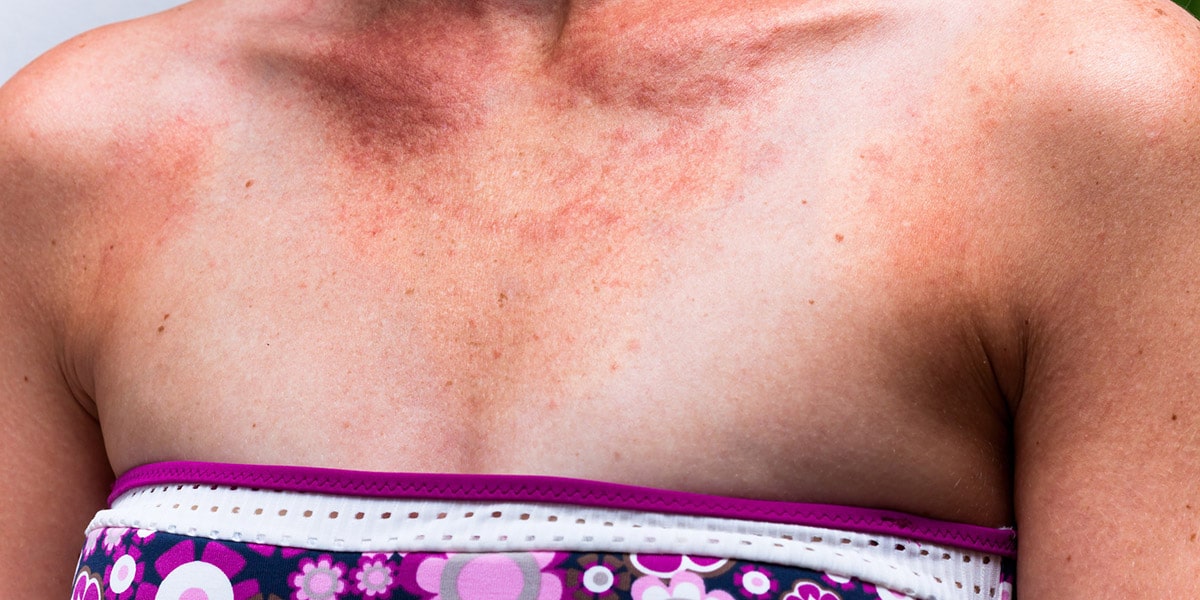Summer’s just around the corner! But along with those warm sunny days also comes a serious threat: ultraviolet (UV) radiation. We all know that spending a bit too much time under the sun can cause sunburns. Besides sunburns, how exactly do the sun’s rays damage your health? Here’s just some of the ways that UV rays can harm your body.
UV rays from the sun not only damage your skin, but can also cause skin cancer. 1 in 5 Americans, 1 in 7 Canadians, and 2 in 3 Australians will develop skin cancer in their lifetime, mostly due to overexposure to UV radiation.¹ ² The sun emits both UVA and UVB rays, where UVA rays are responsible for premature aging and UVB rays cause sunburns. Both forms of UV rays also damage your skin cell DNA. The damage you get from sun exposure accumulates and in worse cases, can even cause skin cancer. Melanoma is the most serious form of skin cancer and can be lethal.
The sun’s rays can also accelerate skin aging. In fact, up to 90% of skin aging is due to UV rays from the sun.³ Specifically, UVA rays are the real culprit; they not only damage the surface of your skin, but also penetrate deeper to break down important skin proteins, collagen and elastin. These important proteins help hold your skin together by keeping it firm and elastic. As they get broken down, your skin loses its structure and flexibility, causing skin aging symptoms like wrinkles, saggy skin, and spider veins.⁴UV damage doesn’t just stop at the skin; it can also harm your eyes. Overexposure to UV light can lead to the formation of cataracts, the clouding of the lens of the eye. At least 10% of cataract cases are directly attributable to UV exposure.⁵ Blurry vision, faded color, double vision, and poor night vision are all common symptoms of a cataract. If left untreated, it can even lead to blindness. UV exposure may even cause eye cancer. Research has linked it to melanoma of the eye, intraocular melanoma, and squamous cell carcinoma of the conjunctiva.
To help prevent the negative impacts of UV radiation, it’s important to use proper sun protection. It’s recommended to apply a broad-spectrum sunscreen with an SPF of at least 30. UV protective clothing and a wide-brimmed hat are also good forms of sun protection. Make sure to also wear a pair of sunglasses to protect your eyes. Look for ones that block 99-100% of UVA and UVB rays, or offer UV absorption up to 400nm. To stay protected in the sun, you can also use the free sun safety app, Sun Index. Available for iOS and Android, the app gives tailored sun safety recommendations, such as how long you can stay in the sun before getting a sunburn and how much sunscreen to apply based on how much skin you have exposed.Sources:
- Skin Cancer Foundation. (n.d.) Skin Cancer Statistics. Retrieved May 3, 2018
- Cancer Council Australia (n.d.) Skin Cancer. Retrieved May 3, 2018
- Canadian Dermatology Association. (n.d.). Photoaging. Retrieved May 3, 2018
- Darvin M.E., et al. (2014). Influence of sun exposure on the cutaneous collagen/elastin fibers and carotenoids: negative effects can be reduced by application of sunscreen, J. BioPhotonics. 7(9): 735-743. Retrieved May 3, 2018
- Skin Cancer Foundation (n.d.) How Sunlight Damages the Eyes. Retrieved May 3, 2018



